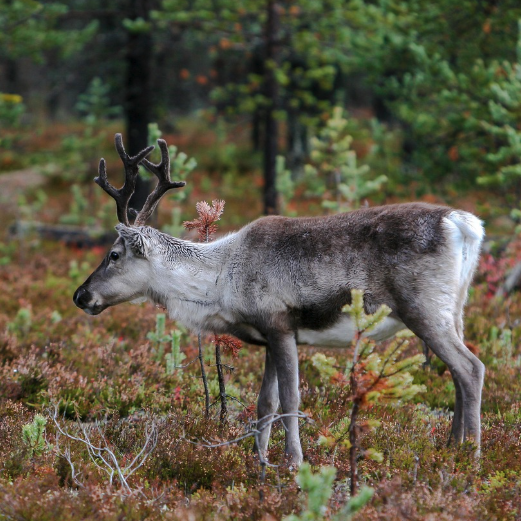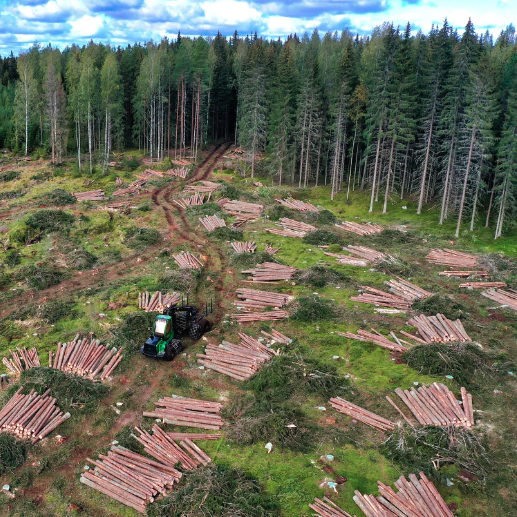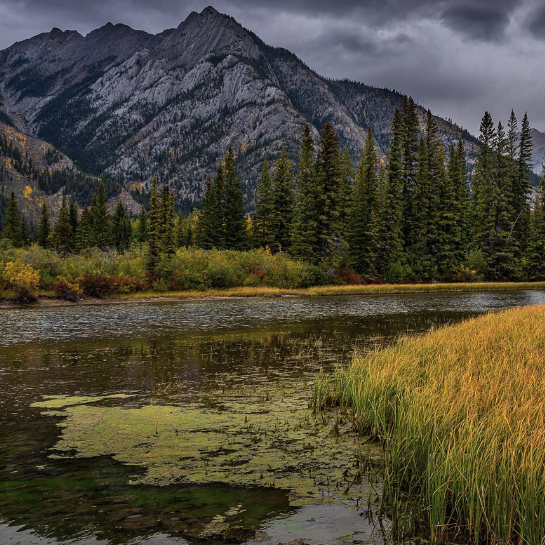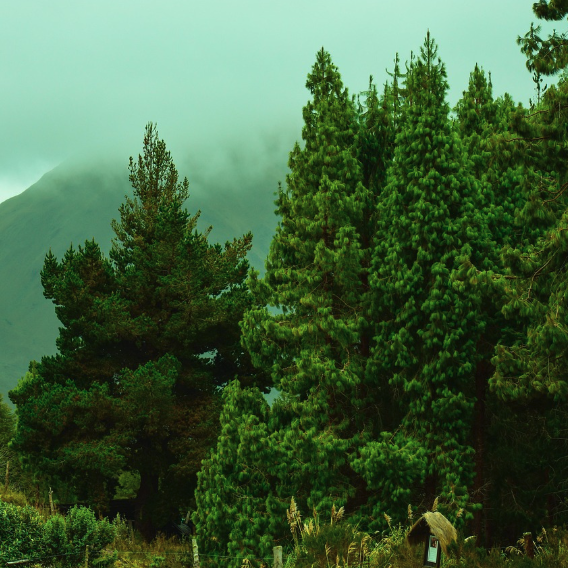Lesson Title: Celebrating National Forest Week
🌲 Bring National Forest Week to Life in Your Classroom! 🌲
Forests clean our air, store our water, shelter wildlife, and support communities worldwide. And now’s your chance to help students reflect on how they can help preserve these precious ecosystems.
Download this ready-to-use lesson plan to guide students through the wonders of forest ecosystems, the living things they support, and the role of the forestry industry. They’ll explore real-world challenges and practical ways to protect forests, all while having fun with hands-on activities and an interactive Goosechase Experience.
Perfect for grades 4–8, this lesson will leave your class informed, inspired, and ready to take action for our planet’s forests.
Grade: 4 - 8
Subject: Science, Social Studies, Environmental Studies
Learning Objectives:
- By the end of this lesson, students will be able to:
- Describe the role of forests in America or Canada’s environment and economy.
- Identify key living things found in American or Canadian forests (plants, animals, fungi).
- Explain the importance of sustainable forestry practices.
- Suggest actions individuals can take to help preserve forests.
Materials:
- Projector or whiteboard
- Images or short videos of American or Canadian forests, wildlife, and forestry operations



- Chart paper and markers
- Printed fact sheets (optional)
- Mobile devices (tablets, phones, or laptops) with the Goosechase app installed
Preparation:
- Create an Experience on the Goosechase app with a series of Missions focussed on forestry
- Develop Missions that require students to demonstrate their understanding of what they have learned. Example Missions:
- Tree-mendous ID – Take a photo of a tree species you learned about today and label it.
- Forest’s Finest – Record a 30-second video explaining why forests are important to Americans or Canadians.
- Industry Insights – Answer this question: Name one job in the forestry industry and explain what they do.
- Web of Life – Submit a drawing or photo showing at least 4 living things that depend on each other in the forest.
- Save the Forest! – Share one action you or your family can take to help preserve forests.
- Wildlife Wonders – Find an image (or draw your own) of an American or Canadian forest animal and share one fact about it.
- Adapt the difficulty of the Missions based on the proficiency levels of your students to keep the activity inclusive and engaging for everyone.
- Prepare hints or resources that might help students solve the Missions if needed.
- Divide students into teams and assign each team a mobile device with the app, or have students complete the scavenger hunt individually.
- Run your Experience during one class period or longer.
- App Set-Up
- Dedicate time to ensuring all students have the Goosechase app downloaded and joined to the Experience to avoid any tech issues.
Lesson Outline:
- Warm-Up Discussion
- Ask students
- “What comes to mind when you think of a forest?”
- “Why do you think forests are important to America or Canada?”
- Teacher-Led Instruction: Record responses on the board under “Environmental,” “Economic,” and “Personal” columns.
- Ask students
- Teacher-Led Presentation: Forestry in America or Canada
- Cover these key points:
- Our Forests
- Canada has about 347 million hectares of forest — nearly 9% of the world’s forests.
- The United States contains approximately 304 million hectares of forest land, which equates to about 8% of the world’s total forest area
- Forests provide clean air, water, and habitat for countless species.
- The Forestry Industry
- Forestry provides jobs in logging, milling, paper production, conservation, and tourism.
- Sustainable forestry ensures trees are replanted and biodiversity is protected.
- Living Things in Forests
- Showcase examples of American or Canadian forest wildlife: black bears, moose, beavers, owls, fungi, mosses, and native tree species.
- Highlight the interdependence between species.
- Protecting Forests
- Threats: wildfires, pests, climate change, illegal logging.
- Solutions: sustainable harvesting, tree planting, fire prevention, education, conservation laws.
- Our Forests
- Cover these key points:
- Class Activity: Forest Web
- Give each student a “role” (tree, animal, insect, fungus, human industry worker, etc.).
- Using string, connect students based on who/what they depend on.
- Discuss how removing one piece (e.g., cutting too many trees) affects the rest of the web.
- Goosechase Scavenger Hunt
- Read through Missions with students, emphasizing the importance of evidence and analysis in their responses.
- Monitor progress and provide assistance as necessary.
- If working in teams, encourage them to strategize and collaborate to solve the Missions.
- Sit back and enjoy watching your students collaborate and demonstrate their learning.
- Debrief and Reflection
- Review the activity, discussing which missions were the most challenging or fun.
- Discuss how teams collaborated and solved problems together.
- Question Prompt: If you were in charge of Canada’s forests, what would you do to keep them healthy for the next 100 years?
- Optionally, award prizes to the team(s) with the highest score.
Optional Post-Experience Activities:
- Reflection Journal
- Students write 1–2 paragraph reflection answering the following:
- “What is one thing you learned about forests today that surprised you?”
- “What is one thing you can do in your community to help protect forests?”
- Assessment Focus: Comprehension, personal connection, and ability to apply knowledge.
- Students write 1–2 paragraph reflection answering the following:
- Forest Facts Poster
- Student create an illustrated poster (digital or on paper) showing:
- 3 benefits forests provide
- 3 threats to forests
- 3 actions to help protect forests
- Assessment Focus: Accuracy of information, clarity of communication, visual creativity
- Student create an illustrated poster (digital or on paper) showing:
- Participation in discussion and reflection
- Creativity and thoughtfulness in Goosechase responses
- Assessment of Research project or STEM Challenge.
- Species Spotlight
- Students choose a plant, animal, or fungus found in Canadian forests. Create a one-page “profile” that includes:
- Name (common and scientific, if possible)
- Habitat and range
- Role in the ecosystem
- One interesting fact
- Assessment Focus: Research skills, presentation of key facts, use of scientific language.
- Students choose a plant, animal, or fungus found in Canadian forests. Create a one-page “profile” that includes:
- Sustainable Forestry Report
- Students explain what sustainable forestry means, why it’s important, and give 2 examples of sustainable practices in Canada.
- Assessment Focus: Understanding of industry concepts, ability to summarize and explain ideas clearly.
Assessment
- Participation in discussion and reflection
- Observation during discussions and activities.
- Quality and accuracy of Goosechase mission submissions.
- Student ability to connect ideas about forest ecosystems, industry, and sustainability.
- Assessment of the Post-Experience Activities
Ready Made Experience

National Forest Week Challenge
Celebrate National Forest Week! Complete creative challenges to show what you’ve learned about forests, their wildlife, and how to protect them.
Get your own copy!
Want a copy of this lesson plan to use with your class?
Keep the Learning Abloom

National Forest Week Challenge
Celebrate National Forest Week! Complete creative challenges to show what you’ve learned about forests, their wildlife, and how to protect them.
Want to explore more STEM-powered Goosechase lessons? Check out our other ready-to-use lesson plans and Goosechase Experiences for hands-on, interactive teaching ideas.
More Where That Came From:
This is just one of many ready-to-run Goosechase lesson plans we’ve created. Explore them all and keep your students learning, laughing, and engaged year-round.
What is Goosechase EDU?
Goosechase is an online platform that helps educators create and run interactive learning experiences in their classrooms and beyond. Sign up and try creating an Experience, or contact us to learn more about our school and district-wide solutions!





